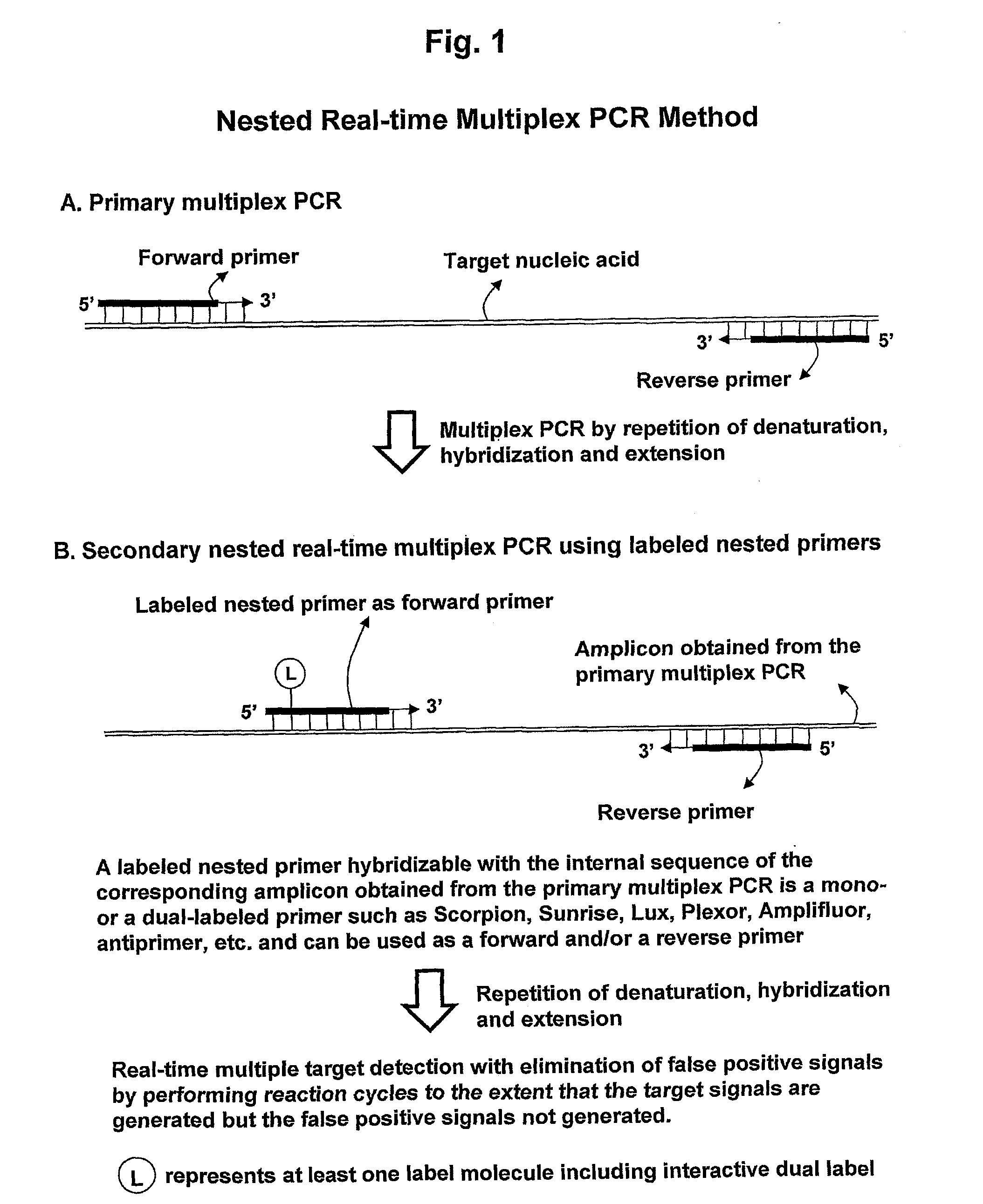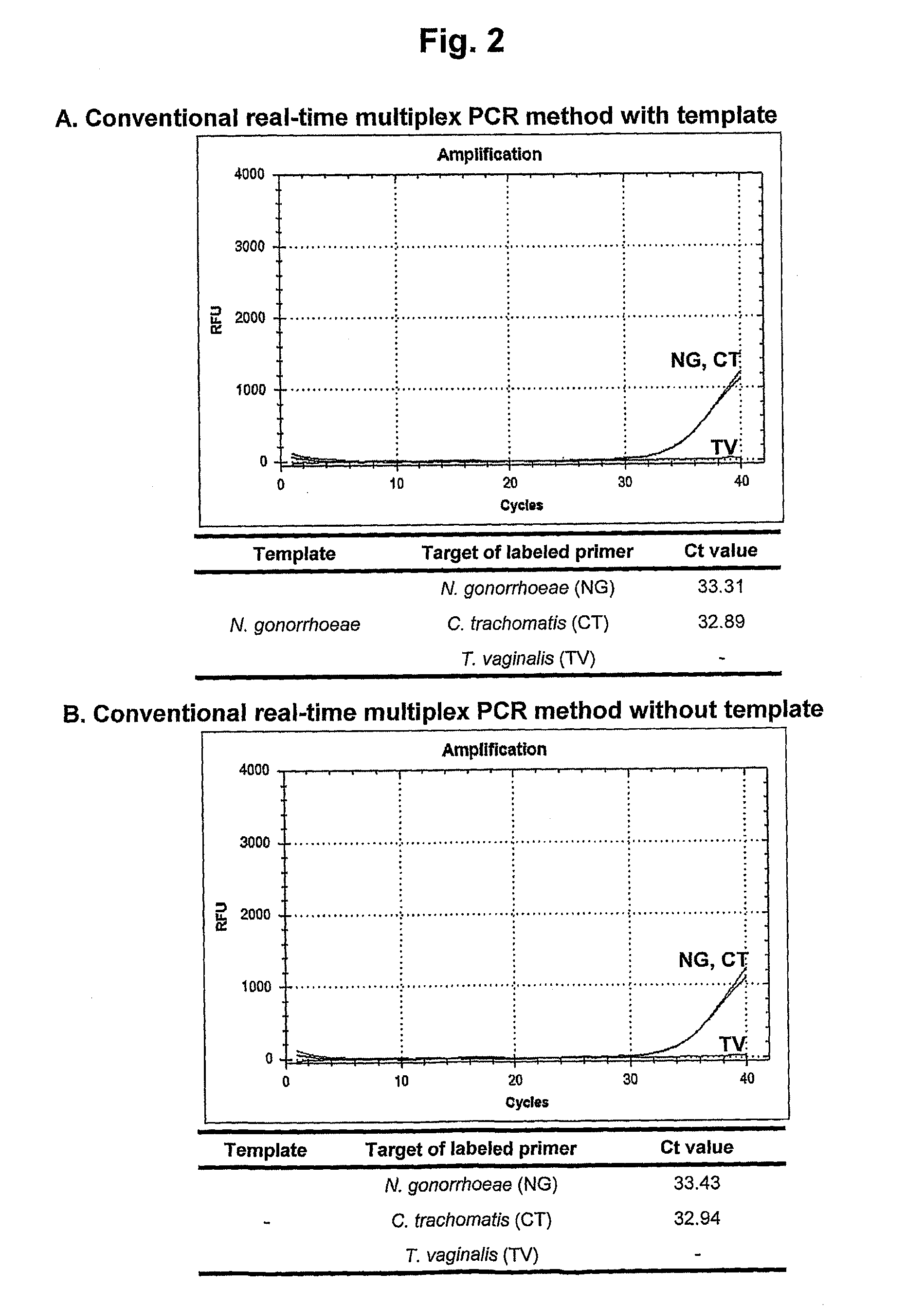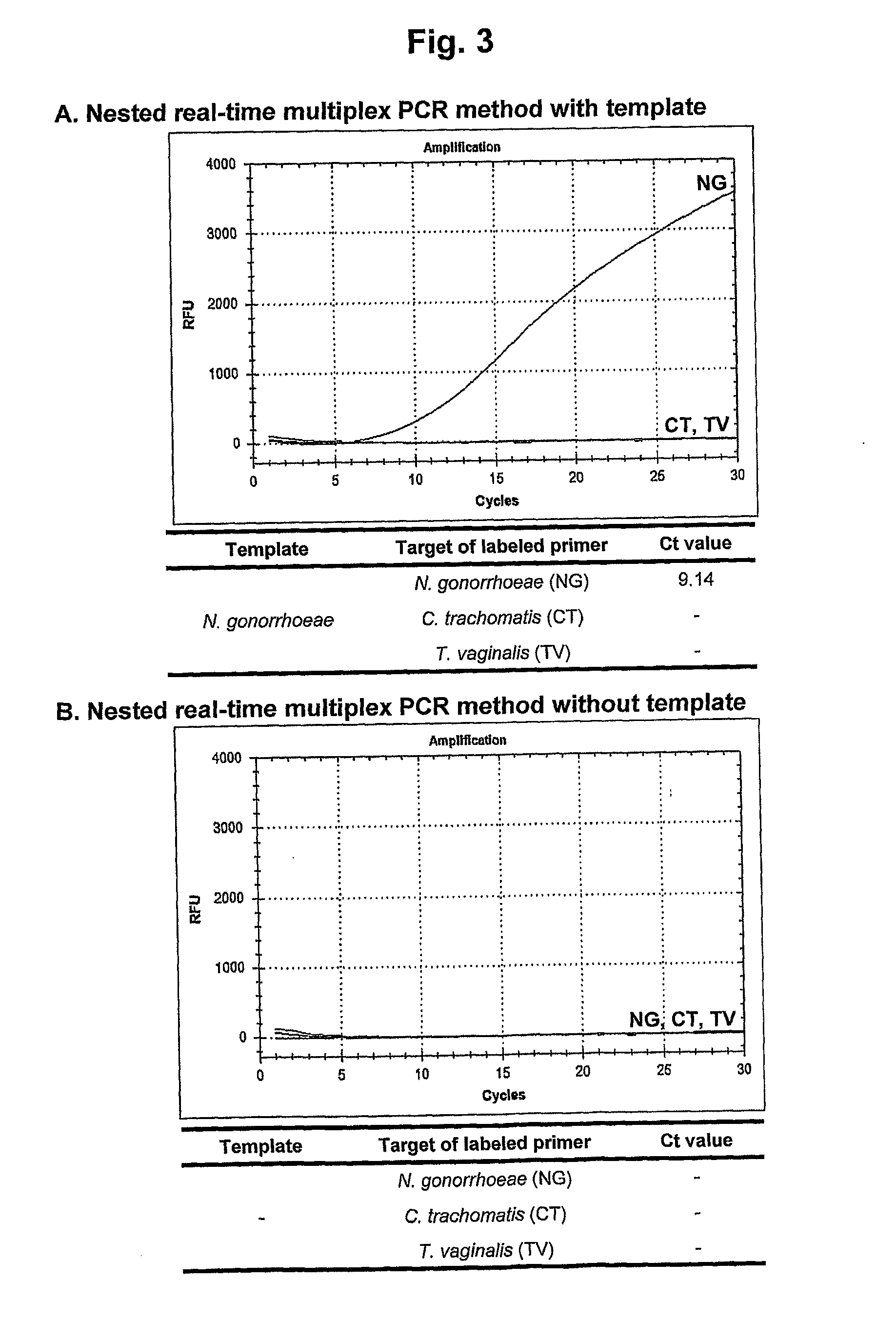Real-time multiplexing detection of target nucleic acid sequences with elimination of false signals
a nucleic acid sequence and real-time multiplexing technology, applied in the direction of fluorescence/phosphorescence, analysis by material excitation, biochemistry apparatus and processes, etc., can solve the problems of unsuitable specific target detection, unsuitable analysis time and efficiency, etc., to achieve the effect of enhancing sensitivity and specificity, and eliminating false positive signals
- Summary
- Abstract
- Description
- Claims
- Application Information
AI Technical Summary
Benefits of technology
Problems solved by technology
Method used
Image
Examples
example 1
The Effect of the Nested Real-Time Multiplex PCR Method in Elimination of False Positive Signals Generated by the Dimer Formation of Labeled Primers During Real-Time Multiplex PCR for Chlamydia trachomatis, Neisseria gonorrhoeae and Trichomonas vaginalis
[0151]The nested real-time multiplex PCR method of the present invention was examined in comparison with the conventional real-time multiplex PCR method in order to verify its effects on elimination of the false positive signals resulting from the dimer formation of the labeled primers.
[0152]For this study, the primer pairs for the primary multiplex PCR and the labeled nested primers for the secondary nested real-time multiplex PCR were designed for the detection of the three different types of target nucleic acids of C. trachomatis, N. gonorrhoeae and T. vaginalis.
[0153]The primer pairs for the primary multiplex PCR were designed to have the dual priming oligonucleotide (DPO) structure for enhancement in target specificity.
[0154]F...
example 2
The Effect of the Nested Real-Time Multiplex PCR Method in Elimination of False Positive Signals Generated by the Dimer Formation of Labeled Primers During Real-Time Multiplex PCR for Haemophilus ducreyi, Herpes Simplex Virus 1 and Herpes Simplex Virus 2
[0168]As reproducibility experiments of the present invention, three different target nucleic acid sequences of H. ducreyi, Herpes simplex virus 1 and Herpes simplex virus 2 were used. The design of the primers and the conditions of the experiment were the same manner as the Example 1, except of primer sequences and labeling. The dual labeled primers have at their 5′-end a fluorescent reporter molecule such as Alexa 532, Alexa 594 or Alexa 647 and a quencher molecule such as Black Hole quencher 1 (BHQ-1) or Black Hole quencher 2 (BHQ-2). The fluorescent reporter molecule and the quencher molecule are separated by 18, 20 or 21 nucleotides. As a template, 1000 fg of the genomic DNA of Herpes simplex virus 1 was used.
[0169]The same prim...
example 3
Sensitivity and Specificity in the Nested Real-Time Multiplex PCR Method of the Present Invention
[0180]The sensitivity and specificity of the nested real-time multiplex PCR method of the present invention were tested by detecting the genomic DNA of H. ducreyi or Herpes simplex virus 1 in the presence of three primer pairs for the detection of H. ducreyi, Herpes simplex virus 1 and Herpes simplex virus 2.
[0181]The same primer pairs described in Example 2 were used and the serially diluted genomic DNA of H. ducreyi or Herpes simplex virus 1 was used as a template.
Primary Multiplex PCR
[0182]The primary multiplex PCR was conducted in the final volume of 20 μl containing the serially diluted genomic DNA of H. ducreyi or Herpes simplex virus 1 (1000 fg, 100 fg, 10 fg or 1 fg), 10 μl of 2× Multiplex Master Mix (Qiagen) [6 mM of MgCl2, HotstarTaq PCR buffer, HotstarTaq DNA polymerase and dNTP mix], 5 pmole of each of primers (SEQ ID NOs: 10, 11, 13, 14, 16 and 17); the tube containing the r...
PUM
| Property | Measurement | Unit |
|---|---|---|
| temperature | aaaaa | aaaaa |
| temperature | aaaaa | aaaaa |
| temperature | aaaaa | aaaaa |
Abstract
Description
Claims
Application Information
 Login to View More
Login to View More - R&D
- Intellectual Property
- Life Sciences
- Materials
- Tech Scout
- Unparalleled Data Quality
- Higher Quality Content
- 60% Fewer Hallucinations
Browse by: Latest US Patents, China's latest patents, Technical Efficacy Thesaurus, Application Domain, Technology Topic, Popular Technical Reports.
© 2025 PatSnap. All rights reserved.Legal|Privacy policy|Modern Slavery Act Transparency Statement|Sitemap|About US| Contact US: help@patsnap.com



